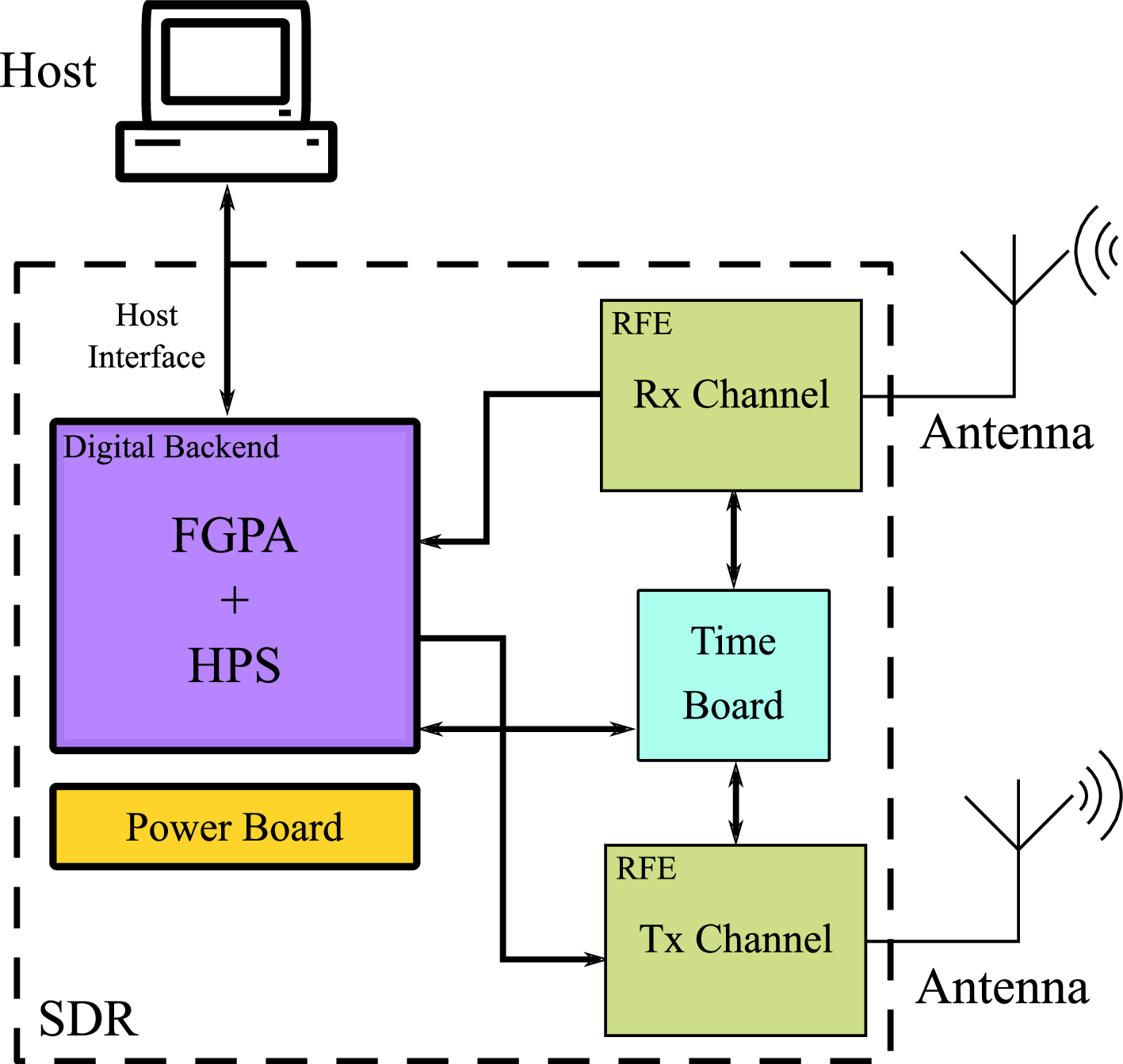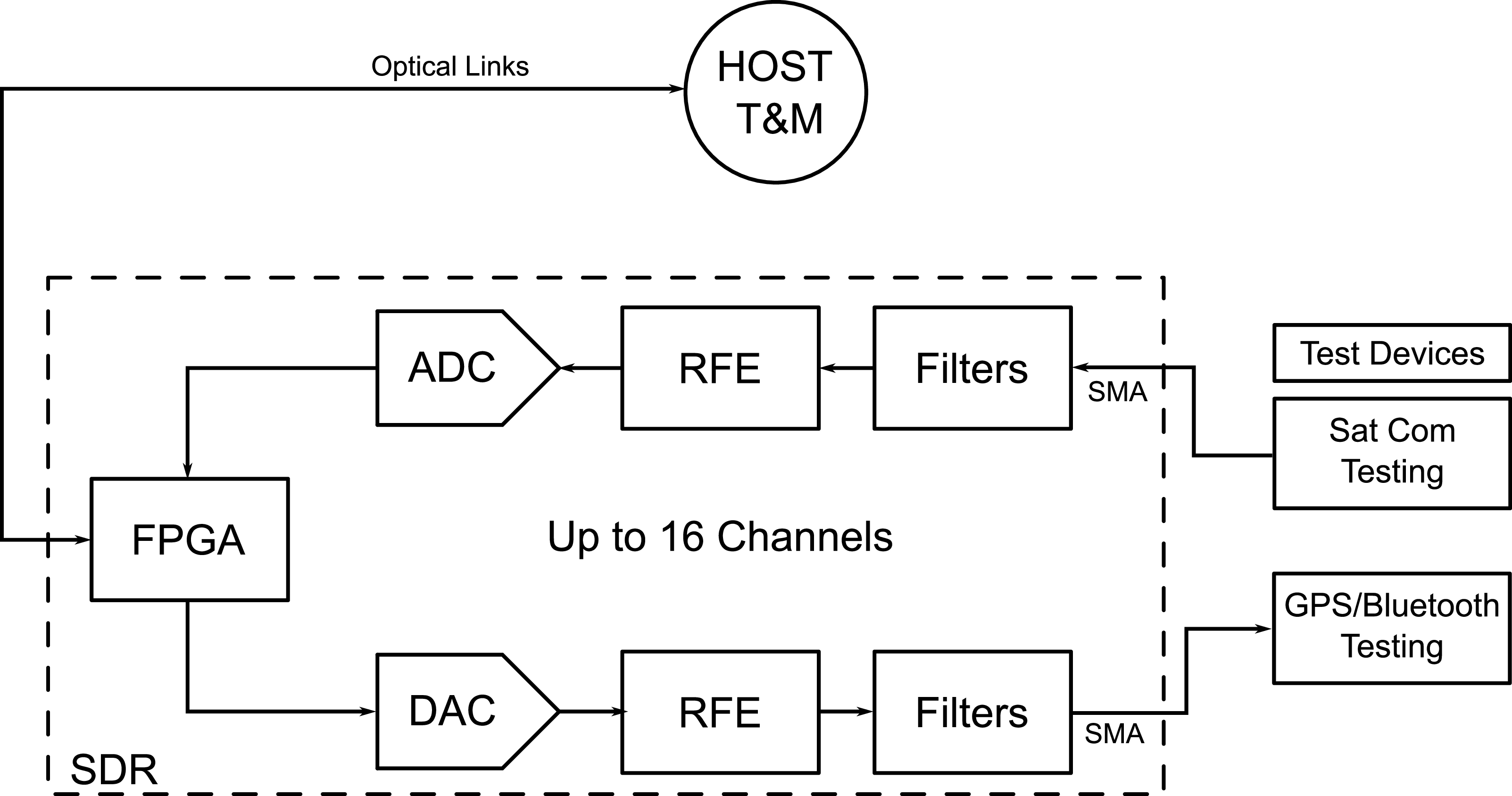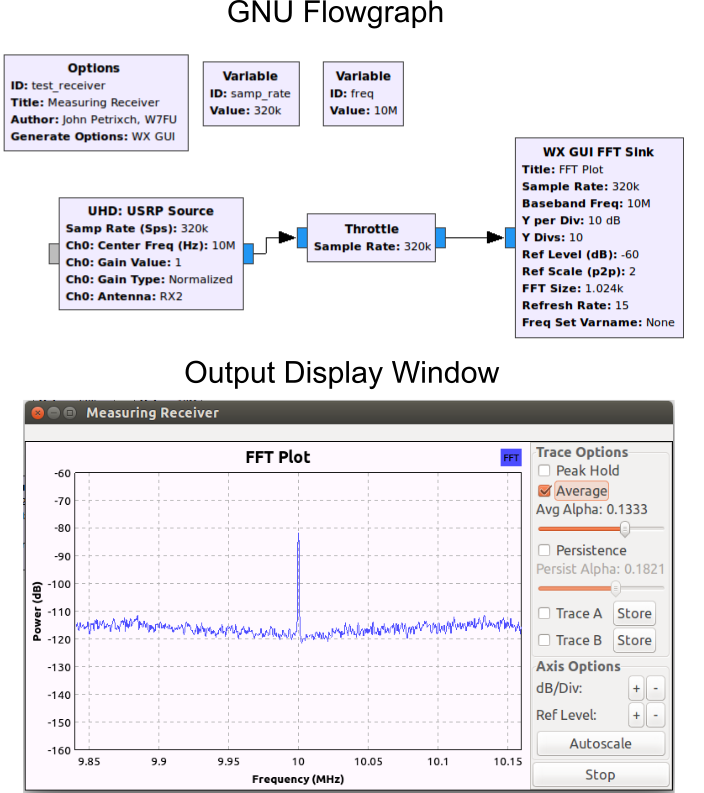How — And When — To Use SDRs For Test And Measurement
By Brendon McHugh, Field Application Engineer & Technical Writer, Per Vices
With the advent of 5G and the internet of things (IoT), wireless interconnectivity is about to reach a whole new level in terms of density, range, speed, and security. These milestones, however, can only be achieved through the constant development of technologies and devices capable of providing innovative ways for wireless integration. Enabling the development of cutting-edge wireless devices requires various types of test and measurement equipment for system calibration, performance evaluation, and to ensure compliance with regulatory standards. Therefore, test and measurement (T&M) systems are fundamental building blocks of the wireless revolution. However, conventional methods for T&M require a variety of special purpose devices with limited functionalities, making the process inefficient, expensive, and laborious.
Software-defined radios (SDRs) can be used to develop general-purpose T&M equipment that can perform several different specialized functionalities, such as signal and clock generation, network analysis, power measuring, and spectrum analysis. The main advantage of SDR-based platforms is the possibility of integrating all these T&M functionalities into one device without needing hardware modification. Moreover, SDRs can be easily connected to a host, providing user-friendly data visualization and control.
This article reviews the integration of SDRs in T&M techniques for RF applications. We first discuss the basic concepts of an SDR, including the building blocks of the general system and its capabilities, the main applications of SDRs, and some advantages over conventional devices. Second, we discuss how SDRs can be applied in T&M systems, covering the initial setup, the necessary software, and how SDRs can solve some challenges of the T&M industry. Finally, we will present some examples of SDR-based T&M systems, and how they affect the development of wireless devices.
What Is An SDR?
The general structure of an SDR consists of two main functional blocks: the radio front-end (RFE) and the digital backend. Auxiliary modules are also necessary, including a clock generator for timing purposes and a power supply board for energy distribution (Figure 1). The radio front-end contains both receive (Rx) and transmit (Tx) channels, providing amplification, filtering, tuning, and mixing. Professional SDRs can work over a wide range of tuning frequencies, with the highest performance device in the market (the Cyan Model from Per Vices) reaching up to 3 GHz of instantaneous bandwidth over multiple independent channels. Each channel contains an analog-to-digital (ADC)/digital-to-analog (DAC) interface, so the RFE can perform multiple-input multiple-output (MIMO) protocols. The digital backend typically consists of a high-end field programmable gate array (FPGA) with onboard digital signal processing (DSP) capabilities, providing enough computing power for state-of-the-art radio-frequency (RF) algorithms while also allowing a high degree of flexibility and adaptability. The backend performs modulation, demodulation, up/down-converting, data packetization over Ethernet links, and application-specific algorithms, including communication protocols and even artificial intelligence/machine learning (AI/ML).

The use of an FPGA-based backend allows SDRs to be produced for off-the-shelf commercialization (COTS) for a variety of different applications, with different requirements in terms of performance, size, weight, and power (SWaP). SDRs can be designed with a wide range of form factors, from small low-power modules for onboard satellite applications to 3U rack units in ground stations. Also, due to the programmable nature of the FPGA, COTS SDRs are suitable for virtually any RF application, including low latency links, electronic warfare (EW) devices, spectrum monitoring & analysis, satellite connectivity, GPS/GNSS systems, and onboard radars for drones.
SDR-based platforms offer a variety of advantages over traditional RF measurement systems. First, SDRs provide long-term acquisition and storage of data, which is extremely important for evaluating clock stability and jitter. Furthermore, SDRs are all-in-one solutions to several tasks, performing multiple measurements (including spectrum and time-domain analysis) at the same time, operating synchronously under a customized application that can be used to display and store data in real-time. The flexibility of the FPGA also allows the use of multiple communication protocols without any hardware modification, including Wi-Fi, 5G, and BLE. Furthermore, high-end SDRs are built in a modular fashion, enabling easy hardware customization for different SWaP requirements.
One of the best advantages of SDRs over conventional T&M platforms is their upgradability, keeping it up to date with state-of-the-art protocols and algorithms and reducing the need to replace the T&M equipment. Moreover, SDR-based T&M can adapt its RF parameters automatically, working with different modulation schemes, center frequencies, pulse durations, and gain/filtering settings. The DSP capabilities of high-end SDRs allow the implementation of very precise and fast measurements, with data visualization, transmission, and storage in real-time. They can also decrease the overall cost of T&M applications by integrating a wide range of application-specific functionalities into only one device and consequently reducing the amount of hardware and complexity of testing equipment.
How SDRs Are Used In Test And Measurement
The first step to perform any measurement protocol with an SDR is to configure the RFE module. The RFE has several filters, amplifiers, mixers, and ADCs/DACs that must be configured to execute the required T&M protocol. In this step, it is important to use SDRs with wide bandwidth performance to test different devices across several frequencies, increasing the range of scenarios. High-end FPGAs are preferable in T&M to provide DSP resources for complex waveform generation and parallel signal processing. Moreover, both RFE and the digital backend must consist of high-quality components to ensure a noise-free and distortion-free operation, to improve the precision of the measurements. The SDR should also be properly connected to the host system, typically via Ethernet communication over optical links. The host itself contain several toolkits for T&M, that can be based on GNU Radio, GNU Octave, and other open-source platforms. In a MIMO SDR, a host can run multiple T&M applications at the same time due to the multiple independent channels of the SDR.

The software application is crucial for a particular T&M implementation, as it is responsible for system control, data visualization, and SDR configuration. Therefore, it is convenient to use devices that are ready to work with software that is stable and well-understood. Per Vices SDRs, for instance, can work with GNU radio out-of-the-box, without any need for hardware or firmware modifications. GNU Radio is a well-known toolkit containing both radio and signal processing functions, most of which are required in T&M, including frequency spectrum sweep, spectrum waterfall plots, constellation diagrams, oscilloscope plots, arbitrary waveform generation, and spurious signals detection. GNU Radio can also automatically calculate RF figures of merit, including noise level, spurious-free dynamic range (SFDR), dynamic range, and receiver amplitudes. Figure 3 shows a flow diagram for a receiver measurement test and the resulting output plot, showing the signal peak at 10 MHz. High-level T&M algorithms can be easily developed in conventional programming languages, including C/C++ and Python.

SDRs can solve several challenges related to T&M implementation. Firstly, the wide instantaneous bandwidth provided by high-end SDRs (high-bandwidth SDRs can reach up to 3 GHz) allows the measurement of a large set of frequencies for spectrum visualization. Secondly, the high-speed streaming of data to the host or server is extremely useful for backhaul testing in satellite and mobile networks. High-performance SDRs use 100 Gbps qSFP+ Ethernet links to transmit data. The FPGA-based backend allows the implementation of parallel signal processing and decoding very high data/symbol rate transmissions over several channels. Finally, the reconfigurability of SDRs provides more robustness in terms of equipment damage and upgradability.
Examples Of Test And Measurement Situations Using An SDR
There are several examples, in both literature and industry, of how T&M systems can be implemented using SDR devices. For instance, they are extremely useful in signal propagation tests. Signal propagation studies can evaluate how much signal is lost due to absorption and scattering caused by obstacles and are fundamental to verify the suitability of the device for a given frequency, range, and application. This is particularly important in 5G, due to propagation limitations of mmWaves. Over-the-air (OTA) measurements of RF performance concerning beamforming are often necessary to ensure quality of service (QoS). The basic setup for propagation T&M typically involves an anechoic chamber, which can be configured for different protocols. In these tests, the SDR can be used as both Tx (for signal generation) and Rx (for signal measurement) devices, able to evaluate antenna and device performance under very controlled conditions. Path loss and power delay profiles are examples of performance indexes that can be measured using SDRs. Many studies have shown the ability of SDR-based T&M devices to analyze the performance in 5G bands (including 28 GHz) in indoor environments, including offices, stairwells, corridors, and laboratories.
SDRs can also be applied in GPS simulators, used to test whether a GPS application is working correctly in terms of positioning, timing, and navigation. The RF community has developed open-source options for GPS simulation, such as the GPS-SDR-SIM application that can be executed in the host system. This program allows the user to create a trajectory sequence in either a CSV file, containing Earth-centered Earth-fixed (ECEF) positions, a stream of NMEA GGA sentences, or a fixed position via command line. Satellite constellation can be specified by the user, using a daily GPS broadcast ephemeris file, which is then used to simulate the Doppler and the pseudorange for that specific satellite constellation and provide digital I/Q samples for the signal. After signal generation, the user can play these files on the SDR Tx chain, which acts as a T&M tool in a variety of performance evaluations, including processing capabilities and receiver signal strength.
One of the most useful applications of SDR-based T&M is in antenna measurement, due to the SDR’s ability to easily generate and receive multiple signals from several independent channels. The key performance index of any antenna is the radiation pattern. The pattern diagram shows the amount of electromagnetic energy emitted and received by an antenna in any direction, so that the function and directivity of an antenna can be obtained from it. T&M allows the experimental acquisition of radiation data to evaluate the radiation pattern of an antenna, which is fundamental to assess efficiency. For instance, a study from the Amrita School of Engineering has demonstrated the use of SDR platforms running under GNU Radio to evaluate the performance of microstrip antennas. In this setup, an omnidirectional antenna source transmitted a well-defined 1.42 GHz, whereas the antenna under test rotated on top of a platform controlled by a stepper motor. The rotation allows the measurement of radiation in all directions. The microstrip antenna under test was connected to the SDR/GNU system for radiation pattern and power spectrum analysis, which were used to calculate Half Power Beam Width and Front to Back ratio. Conventional methods require several specialized devices that are hard to adapt for different applications, and this study demonstrated the viability of using a much cheaper, precise, flexible, and automated alternative based on SDRs.
The software nature of SDRs provides another huge advantage over analog approaches: automation. Because of the digital unit and the host communication interface, SDRs can automatically perform pre-programmed sequences of T&M protocols without the need for human intervention. Not only does this significantly improve the speed and cost of each T&M run, but also increases the reproducibility of results by eliminating human error. In laboratories, the tests can be programmed considering power thresholds and sequence of events to avoid damaging the RF components. Also, it can be performed remotely by test engineers via IP connection, by integrating the SDRs into the local servers of the laboratory, which is extremely convenient for exhaustive test protocols. Automation is also useful for field T&M, by allowing the pre-programming of sequences of signals in the SDR Tx channels and automatic operation of RF devices in remote locations, such as cell towers for coverage area assessment.
In the 5G networking, calibration and measurement are fundamental to ensure reliable operation and QoS. SDRs can easily perform calibration algorithms for radio transceivers, optimizing, for instance, DC offsets, quadrature imbalances, and filter bandwidth. They can also implement power management algorithms to control power modes, power-down sequencing, and current/voltage limitations. Management of power circuits is also important for beamforming and beam-steering, which are key technologies in 5G. Propagation studies of 5G antenna arrays, including near field patterns, polarization measurements, and beam-shaping, can be performed using high-end MIMO SDR devices with the minimum amount of equipment. Finally, SDR-based T&M can implement network testing in 5G architectures, measuring the effectiveness of DSP algorithms in retrieving data coming from simultaneous EU, call/data access rates, and mobile network latency.
SDRs Offer Lower SWaP Test And Measurement Solution
The ever-evolving RF technologies in the 5G and IoT era require a huge effort in the development of test & measurement equipment, crucial for reliable assessment of performance indexes and product certification. With new devices, algorithms, and communication protocols arriving every week, conventional T&M techniques are becoming obsolete, due to the high number of specialized devices involved and their inability to upgrade and update their functions. SDRs provide a general-purpose approach, allowing the implementation of several different T&M functions in only one COTS device, able to be upgraded and updated on the fly using software-based functions. This provides the flexibility and robustness required by the modern T&M industry, while also decreasing long-term costs due to the reduction in the amount of necessary hardware. SDRs also come in a variety of SWaP specifications, allowing them to be implemented in a wide range of T&M applications, from remote ground stations to onboard satellite units. Both the industry and academic literature provide examples of SDR uses in the T&M field, including antenna characterization, 5G network calibration, automated laboratory setups, propagation studies, and GPS simulation. With the upcoming technological leap powered by 5G and IoT, SDRs are the best way to keep yourself updated in the T&M industry.
About The Author
Brendon McHugh is a field application engineer and technical writer at Per Vices Corporation. Brendon is responsible for assisting current and prospective clients in configuring the right SDR solutions for their unique needs and possesses a degree in theoretical and mathematical physics from the University of Toronto. Per Vices has extensive experience in developing, building, and integrating high performance software defined radios for defense and electronic warfare applications. Brendon can be reached at solutions@pervices.com.
